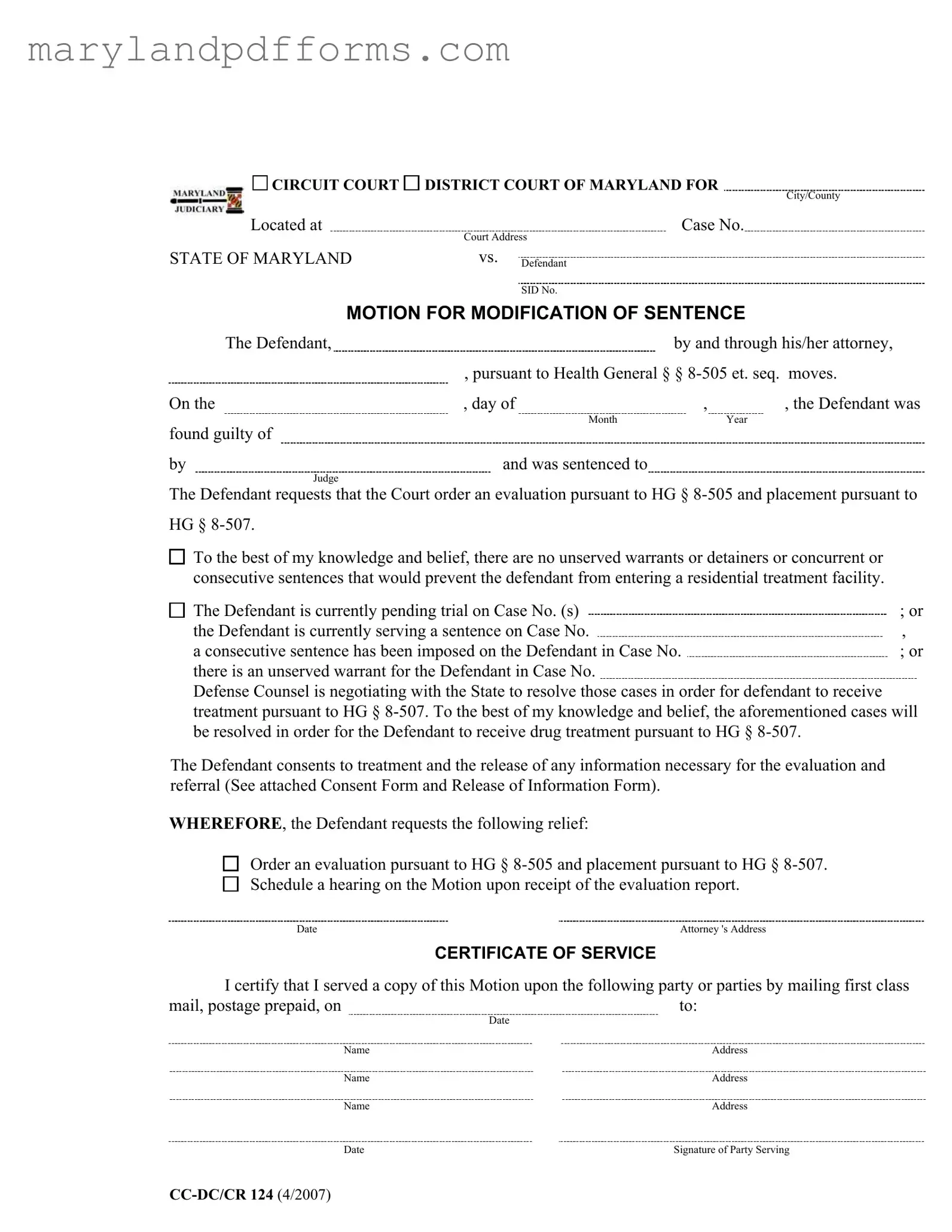Blank Maryland Modification Sentence Template
The Maryland Modification Sentence form is a legal document used to request changes to a defendant's sentence in the Maryland court system. This form allows the defendant, through their attorney, to seek an evaluation and potential placement in a treatment facility, which can significantly impact their rehabilitation process. If you need assistance with this form, please fill it out by clicking the button below.
Fill Out Maryland Modification Sentence Now
